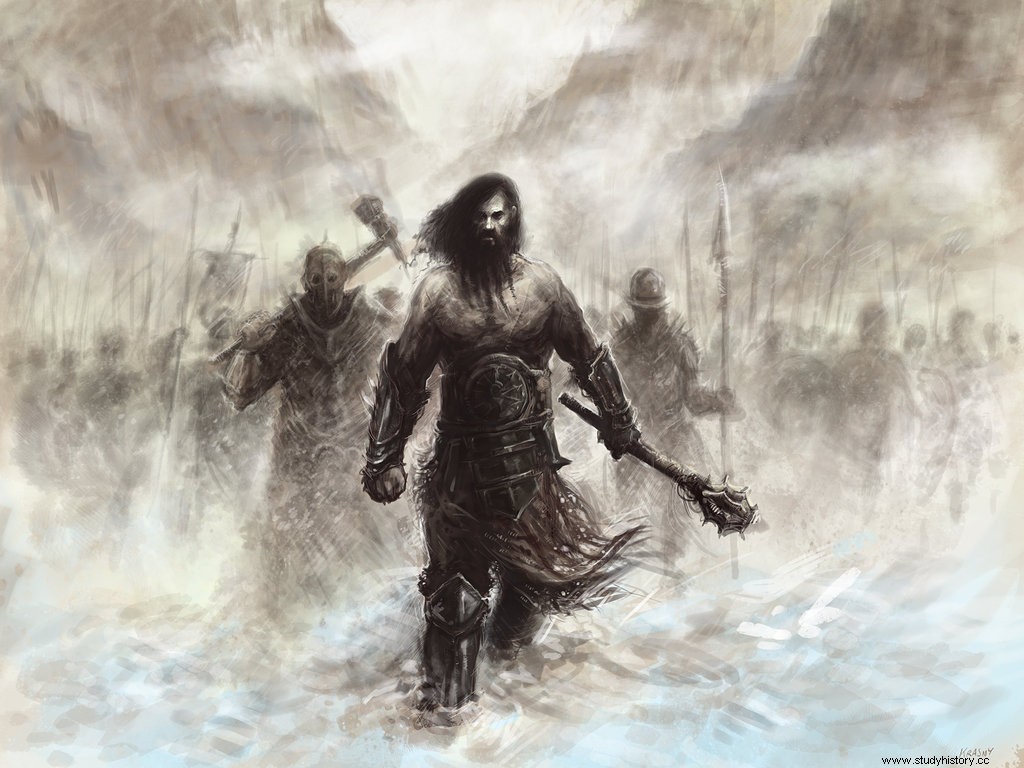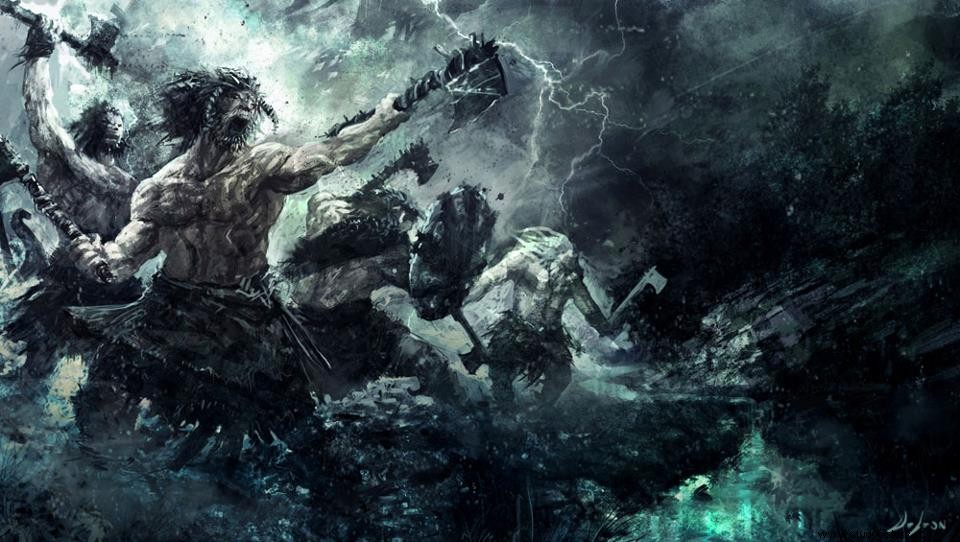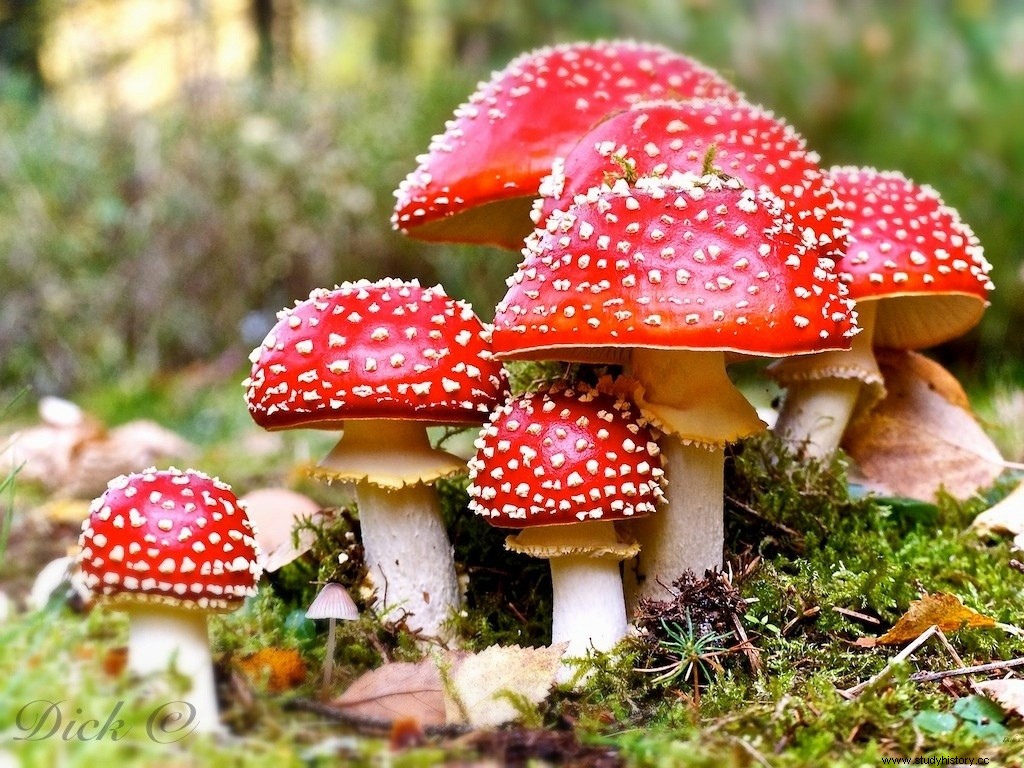Much has been written in recent years about Viking culture. Movies and television series have managed to arouse admiration for this fascinating culture that emerged overnight as a true Ragnaröki against European cultures, to, in the same sudden way, plunge into integration and oblivion. It did not do so without taking with it mysteries as important as being the first culture that came from the Atlantic to trade with American peoples or completely curious anecdotes in their daily lives, such as washing every day, unlike the Christians who barely did it twice. or three times a year, open and consensual relationships not only by men or social stratification... Within the people who made up the Viking community there is a type of individual that is rarely heard or read about.
We all know that in Viking society there was a king or jarl , warriors, peasants and slaves. When the time of looting and raiding occurred, usually in summer, the peasants exchanged hoes for swords and threw themselves into the sea. However, there was a type of individual in this Viking society who did not enjoy this versatility and throughout his life he was born and died with the same role... the Berserker (Berserker in plural), a fierce warrior, a true son of Odin who threw himself half-naked ahead of the infantry, immersed in a trance of death and bloodlust towards whoever was in front of him, whether friend or enemy... hence they were always the first in rows. It is also read that he was like this out of sheer impatience. Such was the case that sometimes they jumped out of the boats before their time and drowned, before even going into battle.

These fierce warriors, blind with murderous rage, were vital in battle, as they did not waste time in contemplation or sentimentality, they only killed whatever came their way . Such was the importance of their contribution in battle that they were compensated and praised like no other… until the season of “Viking explorations” was over and they had to go home. At this time, the Vikings relegated their great warriors to live as nomads, lost in the woods, far from the luxury of their spoils, and secluded like wild animals until the start of the following summer.
Etymology
Berserker may derive from the word berr which means naked or, in Germanic, bear. When they went into battle they only wore a bearskin and a dagger. Sometimes they could carry a shield but they quickly got rid of it. This outfit was completely different from that of the other Vikings, who were well equipped for battle. His appearance and his ferocity were an extra to intimidate the enemy. Immune, indestructible, they felt no pain… only fury. Sometimes, after the battle, they died of dehydration, even without any injuries. Some sources describe them like this…
His men (of Odin) rushed without armor, they were as mad as dogs or wolves, they bit their shields and were strong as bears or wild oxen, they killed people with one blow, and neither fire nor wind could defeat them. iron . [Icelandic historian and poet Snorri Sturluson (1179-1241) in his Ynglinga saga]
They fought without chain mail, like rabid wolves, they bit the shield and had the strength of a bear, they massacred their opponents and neither fire nor iron made a dent in them . [Adam of Bremen, Bishop of Hamburg]

Warriors with similar characteristics were the Úlfhednar (Úlfhedinn in singular). The only difference was that the Úlfhednar dressed in wolf skins, hence their etymological meaning that defines them as dressed in wolf skin. These, in addition, were not dressed with a dagger but with a spear, the favorite weapon of Odin . Both the spear and the wolves were attributes of Odin, since the god had two wolves:Geri and Fleki . All this would reaffirm the figure of the Úlfhedinn as Odin's warrior. Likewise, it must be said that the name Odin comes from the Anglo-Saxon Woden , meaning fury or outburst, something clearly instilled in these Viking warriors.
Thanks to these behaviors and animal similarities, all kinds of legends arose around the Berserker and Úlfhednar. It was said that they had their origin in sorcerers and even in mental patients who relived their battles over and over again, unconsciously entering that trance indefinitely - today it could be diagnosed as post-traumatic stress. They even drank the blood of the animal with which they identified and wore their skins in a kind of totemic rite because they acquired the strength of the animal and felt possessed by it. Not surprisingly, this led to legends and even books and movies about werewolves inspired by these Vikings.

Odin
The trance
When we talk about the state of madness, or the animal behavior of the Berserkir, we must not think that it was unfounded. Although there is also the theory, as it was indicated that some warriors fell into that state due to post-traumatic stress, it is believed that there were also certain additives involved. Disengaged jaws, the red tone in the skin, the heat that made them tear their clothes, the rage, not feeling pain and dying of dehydration were clear symptoms of some kind of drug. One of the ones they are said to have used was the muscaria fly agaric , which grew abundantly in the birch forests of the northlands. It is also named the ergot of rye, that could be found in contaminated bread and among the chemical substances it contains is lysergic acid, precursor of LSD.

Fly agaric
Legacy and end of an era
In 1015, the Jarl Eiríkr Hákonarson of Norway declared the Berserker and the Grágás illegal , Iceland's medieval law code, sentenced its warriors to lawlessness. By the 12th century the Berserker parties had been completely disbanded.
Currently the name of Berserker accompanies soccer teams, fictional books and movies about werewolves or warriors and even a manga comic. So we see that, despite the passing of the centuries, even within mysticism and fiction, these Viking warriors continue to have a place in Western and even Eastern culture, because beyond Valhalla They will also live immortal in the sources of History and in the imagination of those who dream of other times, of myths, gods and warriors, sons of Odin.
